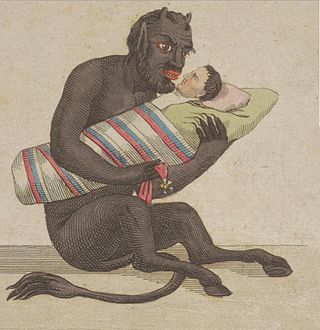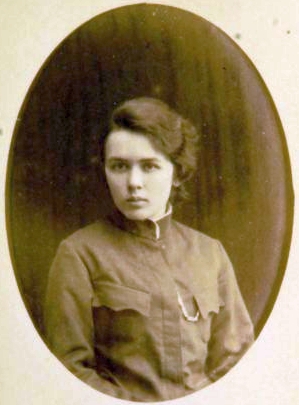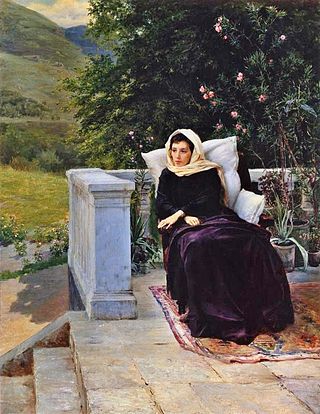Related Research Articles

A gremlin is a mischievous folkloric creature invented at the beginning of the 20th century to originally explain malfunctions in aircraft, and later in other machinery, processes, and their operators. Depictions of these creatures vary widely. Stories about them and references to them as the causes of especially inexplicable technical and mental problems of pilots were especially popular during and after World War II.

An imp is a European mythological being similar to a fairy or demon, frequently described in folklore and superstition. The word may perhaps derive from the term ympe, used to denote a young grafted tree.

The Battle of Orsha, was fought on 8 September 1514, between the allied forces of the Grand Duchy of Lithuania and the Crown of the Kingdom of Poland, under the command of Lithuanian Grand Hetman Konstanty Ostrogski; and the army of the Grand Duchy of Moscow under Konyushy Ivan Chelyadnin and Kniaz Mikhail Bulgakov-Golitsa. The Battle of Orsha was part of a long series of Muscovite–Lithuanian Wars conducted by Muscovite rulers striving to gather all the former Kievan Rus' lands under their rule.

A chort is an anthropomorphic malign spirit or demon in Slavic folk tradition. Chorts are often depicted identically to Christian devils, with horns, hooves, and a skinny tail. In Slavic mythology, a singular Chort is sometimes identified as a son of the god Chernobog and the goddess Mara. Likewise, in Ukraine mythology, Chorts were originally the priest of Chernobog. In folk Christianity, they are considered lesser minions of Satan.

Beklemishevskaya Tower is a tower at the Eastern edge of Moscow Kremlin Wall. It was named after a boyar Ivan Bersen-Beklemishev, whose house had been adjacent to the tower from the Kremlin side. It was earlier known as Russian: Москворецкая tower based its position on the near Moskva River. It is similar to the other two towers standing at the other corners of the Kremlin triangle, Vodovzvodnaya and Uglovaya Arsenalnaya rowers. While these towers are cylindrical, all other towers of the Kremlin's Wall have been built on a square plan base.

The Ministry of Communications of the Union of Soviet Socialist Republics (USSR) (Russian: Министерство связи СССР) was the central state administration body on communications in the Soviet Union from 1923 to 1991. During its existence it had three names: People's Commissariat for Posts and Telegraphs (1923–32), People's Commissariat for Communications (1932–46) and Ministry of Communications (1946–1991). It had authority over the postal, telegraph and telephone communications as well as public radio, technical means of radio and television broadcasting, and the distribution of periodicals in the country.
Ruslan is a masculine given name mainly popular among Turkic, North Caucasian and some East Slavic people. The name is an old Azeri/Caucasian Albanian variant of the Turkic word arslan or aslan – meaning lion. The name is derived from Arslan, Eruslan, another earlier Tatar variant of the word. The name became popular through the folk tale hero Yeruslan Lazarevich. The name is popular in Russia, Ukraine, Azerbaijan and Belarus.

Slavic fantasy is a sub-genre of contemporary art that developed in the late 90s and early 2000s. Slavic fantasy is distinguished by the incorporation of Slavic folklore, legends, bylinas, and myths into the general canons of fantasy literature. However, its genre boundaries remain indistinct.
Hryhir Mykhaylovych Tiutiunnyk was a Ukrainian writer, brother of Hryhoriy Tiutiunnyk.

Zhytsen or Žycień is a positive creature from Belarusian mythology said to live in fields. The name literally means "rye creature", from Belarusian жыта, "rye".

Zheuzhyk is a creature of Belarusian mythology. It is considered to be a good creature that lives deeply in the lake bed. Zheuzhyk is considered to be the guardian of rivers and lakes of Belarus.
Lazavik is a creature of Belarusian mythology.
Dzedka is a character of Belarusian mythology. Dzedka is a good mythological creature. It is considered to be the symbol of richness and fortune companion.
Shatans are odd-looking creatures of Belarusian folklore. Shatans are neutral characters and act as symbols of idleness and laziness.

Rafailovich mansion — an old mansion in Taganrog, Russia. Situated in Frunze Street, 20, between Karaspasov mansion and Drossi mansion. It is considered to be a cultural monument and a valuable object of Russia's cultural heritage. Many people think that it is one of the most beautiful buildings in old part of Taganrog.
Verlioka or wyrlook is an East Slavic fairy tale collected by Alexander Afanasyev in Narodnye russkie skazki (1855–63). It is classified in the Aarne-Thompson-Uther Index as tale type ATU 210*, "Verlioka".
The Center for Religious Studies in the name of Hieromartyr Irenaeus of Lyons is a Russian non-profit nongovernmental anti-sectarian organization engaged in research and information and consulting work on the activities of new religious movements and sects of a destructive and totalitarian nature.. The Center was established in 1993 with the blessing of Patriarch Alexy II of Moscow and All Russia and has been headed by Alexander Dvorkin since its founding. The Center is the nucleus of the Russian Association of Centers for the Study of Religions and Sects (RACIRS).
The Faraway Tsardom is an undefined realm of East Slavic folklore into which the hero fell or separated from the ordinary world by an impenetrable dense forests, abysses, seas or other obstacles. In Russian language it is referred to as Тридевятое царство, тридесятое царство.

Anna Konstantinovna Chertkova was a children's writer, social activist, folklore collector, memoirist, and a model of Russian group of painters known as The Itinerants (Peredvizhniki). Her literary pseudonyms are "A. Ch." and "A. Ch-va".

In a Warm Land (107x81cm) is a painting by Russian artist, part of the Peredvizhniki's movement, Nikolai Yaroshenko, created in 1890 in Kislovodsk. The canvas forms part of the collection and permanent exhibition of the State Russian Museum in St. Petersburg. The canvas was donated to the museum by the artist's wife shortly after his death in 1898.
References
- ↑ "Magical World. From Belarusian Myths, Legends and Fairy Tales", Minsk, "Piatrus Brouka Belarusian Encyclopedia" Publishing House, 2008
- ↑ Boris Rybakov. Ancient Slavic Paganism. Moscow, 1981. Б. А. Рыбаков. Язычество древних славян. — М.: Наука, 1981. — ISBN 5-02-009585-0.
- ↑ Цыбулькин В. В., Сивальнёв А. Н., Сердюченко М. Н. «Влесова книга»: Быль и мифы Славянской цивилизации. — К.: ЧП Зеленский В. Л., 2016.